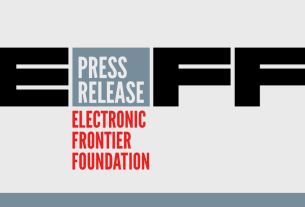Digital transformation is now cemented into mainstream vernacular, but it is far from fully understood. Contrary to what you might glean from software marketing pamphlets, installing a new technological system is not the solution to your organization’s biggest problems. Successful digital transformation initiatives are not centered on the technology itself but on the people they serve.
Digital transformation:
- Goes beyond just technology: Digital transformation is capable of more than what meets the eye, and companies need to have a firm grasp of this framework to leverage all it has to offer.
- Is about driving change: It completely changes how we communicate and operate, especially as we shift to hybrid and remote models. This shift has resulted in companies needing to be internally aligned on all plans and goals and understanding how to manage these accelerated changes properly.
- Shapes company culture: It helps to build a culture of problem-solving and innovation, empowering employees with the tools they need to take charge of their jobs and improve productivity. In the long run, this mobilizes and inspires workforces, fostering a strong company culture.
- Advances the human experience: It is about reimagining how we interact with technology and the world around us. Therefore, people must be kept at the center of digital transformation initiatives.
A human-centered approach
The demand for digital-first experiences is driving businesses to adopt automation quickly, but they must do so strategically. The biggest mistake organizations make is neglecting to factor in people during their digital transformation journeys. IT leaders should ensure that their company’s technological strategy unites the needs of processes and people to best support customers, employees, vendors, and other stakeholders.
[ Also read Digital transformation: 5 trends to watch in 2023. ]
In approaching digital transformation initiatives, IT leaders must consider the following questions:
- How are employees going to react to this change?
- How will this impact our customers?
- How can we utilize this technology to keep up with the evolving expectations of employees and customers?
Rather than diving head-first into digital transformation, it is important to take a step back, consider these factors, and act accordingly. By taking a human-centered approach to digital transformation initiatives, organizations can use technology to transform the lives of the people they serve.
We recently saw one of our customers create significant positive change when they considered the people involved in a necessary technology upgrade.
Bergen Community College needed to replace a legacy document management system that was approaching end-of-life, but while doing so, they also assessed the experience for staff and students at their student center.
They chose to digitize and automate many routine student services, only requiring students to come into the student center for high-touch student support services, such as advising and counseling. The result reduced about 50 percent of the foot traffic to the student center, making the center more responsive to student needs and enabling staff to focus on providing quality service. The college’s team estimates that the time and resources saved from their ongoing transformation are approaching $1 million.
4 ways to enrich the human experience through digital transformation
Human-centered digital transformation requires companies to recognize that people lay the foundation for digital transformation and, therefore, must take the necessary steps to create a seamless experience throughout the process.
The shift to a digital-first business environment can be challenging to all stakeholders as they are expected to adapt to rapid changes at an organizational level. Keeping pace with the changing needs of employees and customers will alleviate this burden and foster a strong company culture.
1. Drive engagement
There are numerous steps that companies can take to achieve this, such as driving employee engagement. Automating new hire onboarding to streamline the process enables new employees to engage with their teams and projects more efficiently. This fosters a great first impression between the company and the employee and will increase the likeliness of retaining talent.
2. Provide the right tools
The next step is to equip your employees with the proper tools to spur innovation. For instance, low-code/no-code tools can empower even non-technical employees. These tools do not require much heavy lifting and involve minimal support from IT teams, enabling businesses across every industry to accelerate digital transformation efforts at a lower cost.
3. Leverage data
A data-driven model should also be enforced in business practices. Data helps inform business decisions. Leveraging data allows companies to offer better pricing models, strategies, and overall services and experiences for customers, employees, and all stakeholders.
4. Set clear, realistic goals
Finally, it is crucial to set clear and attainable goals and ensure that these are communicated throughout the organization. Establishing a roadmap and an overarching framework for a digitalization strategy will guide your digital transformation journey and ensure everyone is on the same page.
A step in the right direction
Customer experience incentives must also be placed as a top priority. An in-depth understanding of what today’s digital customers expect will allow companies to cater to evolving customer demands.
It’s up to leaders to provide employees with the necessary training and tools to integrate automation effectively, leading to increased customer success. Companies that lack a human-centered approach in their digital transformation initiatives will inevitably fail.
[ Culture change is the hardest part of digital transformation. Get the digital transformation eBook: Teaching an elephant to dance. ]



